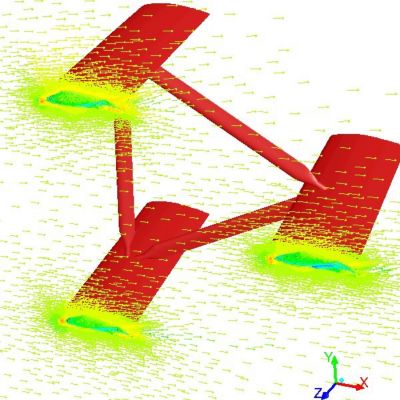ANSYS BLOG
November 28, 2018
Will Future Wind Turbines Be Modular?
Wind turbine blades are huge. This is because the power you can theoretically harvest from the wind is proportional to the length of the blade squared.
In other words, every time you double the blade’s length you quadruple the power you can theoretically collect.
Wind turbine blades traditionally come in one piece. These large blades are a challenge to manufacture, costly to install and infeasible to transport.
Modular wind turbine blades are a lot more feasible than a single piece.
Winfoor addresses the challenges associated with large turbine blades by breaking them into smaller pieces. The Ansys Startup member has opted to build their wind turbine blades using a modular truss design.
“You can easily put a section in a container and ship it around the world. Traditional blades require special transportation arrangements — you must build roads that can support the weight of them. This is hindering the wind turbine industry,” says Pascal Rubin, product developer at Winfoor. “Our modular structure will be standardized. This will make it easy to transport, replace and maintain them.”
The Benefits of a Truss Blade
Winfoor’s inspiration for its blade design was the classic biplane from World War I.
However, Winfoor uses simulation to improve on the older biplane design.
For instance, Winfoor’s blades consist of a truss between three air foils — not two. The truss setup makes the blade stiffer than a standard wind turbine blade.
Winfoor aims to use this added stiffness to one day rival — or even surpass — the longest turbine blades on the market.
Winfoor says the truss design creates a funneling effect where the front airfoils accelerate the wind to the back airfoil.
Overall, Winfoor estimates that they can make their blades 80 percent lighter and 50 percent longer than traditional wind turbine blades.
Engineers might expect that the truss design will add unwanted drag to the system. However, Rubin explains that the benefits outweigh the drag.
“There is added drag but there is also a funneling effect,” says Rubin. “The front two blades accelerate the wind toward the third airfoil. Our analysis in Ansys Fluent finds that this funneling actually makes our blades more efficient than traditional blades.”
Modular Turbine Blades Are Easier to Maintain
Rubin explains that one of the biggest benefits of their blade design is that it is modular.
The ability to buy and ship modular parts separately will make it easier and more affordable to maintain or replace them.
“If you have a problem with a part — like some abrasion on the blade’s tip — you just take the part off and replace it,” he adds. “You no longer have to replace the whole blade.”
Even though trends are pointing towards part consolidation, sometimes it’s best to make a part modular if it is easier and cheaper to maintain.
It’s a little ironic that many other companies are looking to consolidate parts to improve cost and maintenance cycles, while Winfoor believes that sometimes it makes sense to split things up.
How Simulation Helps Engineers Design Modular Turbine Blades
Winfoor uses Ansys Mechanical to design modular features into its turbine blades. First, the tool enables the company to investigate the buckling of its blades.
From that buckling data, Winfoor can assess the load at each point along the blades. The load data are finally used to design the connectors that link each modular part of the blades together.
“The chord and pitch angle are different at each point of the blade. This means you really need to use simulation to determine the load at each connection point,” says Rubin.
“Simulations have saved us a lot of money as you don’t need to run as many physical tests,” adds Rubin. “We use simulation to optimize our design’s structure and fluid dynamics. Simulation has also informed our decision of whether to build the blades from steel or from composites.”
Clearly, there are many ways Winfoor can use simulation to optimize its design. To see how simulations can improve your designs, learn more about the Ansys Startup Program.


